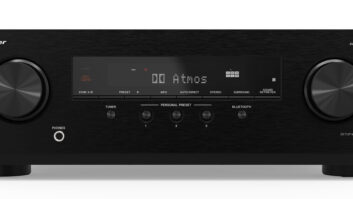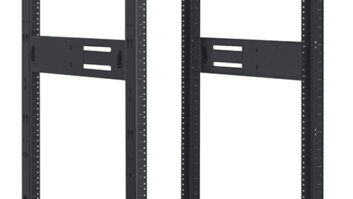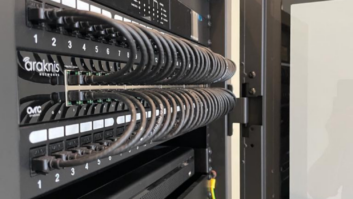
Gordon Van Zuiden ([email protected]) is president of cyberManor in Los Gatos, California.The analog-to-digital transformation of networked home audio video and control equipment over the last decade has dramatically changed the “fire breathing AV rack” of yesterday, as my integrator peer Rich Green fondly used to name this tower of integrated electronic equipment. A rack that used to contain large audio and video matrix switches, a total home control central processor, banks of TV settop boxes, and CD and DVD players has shrunk to a small fraction of its original size because entertainment content can now be streamed over the home network from local hard drive sources or the cloud. Home control can be accomplished from a number of smart phone applications written by companies like Lutron, NEST, and LiftMaster for their own product lines, communicating directly with their processors distributed throughout the home.
The Prevalence of “Hockey Puck” Electronic Client Devices
When Apple introduced the second generation of the Apple TV in 2010 it was more than just a revolutionary idea to stream all of Apple’s iTunes content to any TV, it set the standard for a form factor that was so small that it was easy to place (or strap onto) each TV and priced so that it was very affordable to purchase one for every TV in the home. The service of centralizing TV content at a head end AV rack and distributing this content throughout the home was now pushed to the edge of the AV network and placed right next to the TV, with no switching necessary.
As good as the Apple TV product is for enjoying a wide range of content, it is still limited in its ability to broadcast live sporting events and premium entertainment content (for licensing reasons). This content is still best served by the cable or satellite companies, and a set-top box needs to be provided for this entertainment content for each TV in the home. And we also have seen the same Apple TV-like evolution in the products released for cable or satellite TV consumption. All of these smaller TV “client” products now connect to one larger multi-terabyte, multi-tuner box that can digitally stream high-definition content to all the TVs that have these small, TV client boxes attached to them. TiVO has its Premiere/Mini TiVo server/client combination, DIRECTV has its HD DVR and Genie server/client set, and DISH has the Hopper and the Joey product suite. All of these set-top boxes that used to be housed in a large centralized AV rack are now dispersed throughout the home next to the TV that they serve.

A rack that used to contain large audio and video matrix switches, a total home control central processor, banks of TV set-top boxes, and CD and DVD players now has shrunk to a small fraction of its original size because entertainment content can now be streamed over the home network from local hard drive sources or the internet cloud. Pictured is a Middle Atlantic SRSR Series sliding rotating rack in an install performed by Intra Home Systems.
Typically, the last content source that our clients want at the TV is the Blu-ray player. While this need has been mitigated over the years because of higher quality movie download services, there are still times when the superior content and quality of a locally played back Blu-ray Disc is desired in the home. But even in the Blu-ray player market, manufacturers have shrunk down the form factor and the price to the point where they can easily be located next to each TV that requires this content.
So What is Left in the AV Rack?
Almost all that is left in the AV rack of significant size are the amplifiers needed for the distribution of whole-house music to all of the in-ceiling or externally mounted speakers. But if you use products like the Lexicon Digital DD8 amplifier coupled with a few Sonos Connect audio input products, then even the whole-house audio amplifier AV rack space can be significantly reduced.
The rack will still house networking gear–the router, the gigabit switch, the network attached storage drive for the home, and an IP-based power conditioner and plug strip–but that is about all. For a 5,000- to 6,000-square-foot home, all of these AV and data components can easily fit into a single half-height AV rack.
But what about the receivers for the surround sound zones and the video source switching? Well, those are disappearing as well. It’s not that they are gone by any means, but products like the Sonos Playbar, with its high-quality audio output from the optical audio output of most new TVs, have forced us to rethink the need for a 5.1 receiver in many of our clients’ rooms. Couple this with the HDMI source switching on most new TVs, and you have many of the feature sets that a traditional receiver would normally provide.
It’s clear that the digital transformation of the networked AV and control equipment that we now integrate and distribute throughout our clients’ homes has dramatically altered the traditional AV and home control architecture and infrastructure. Understanding residential networking architecture has never been more critical for the successful custom electronic integrator.







